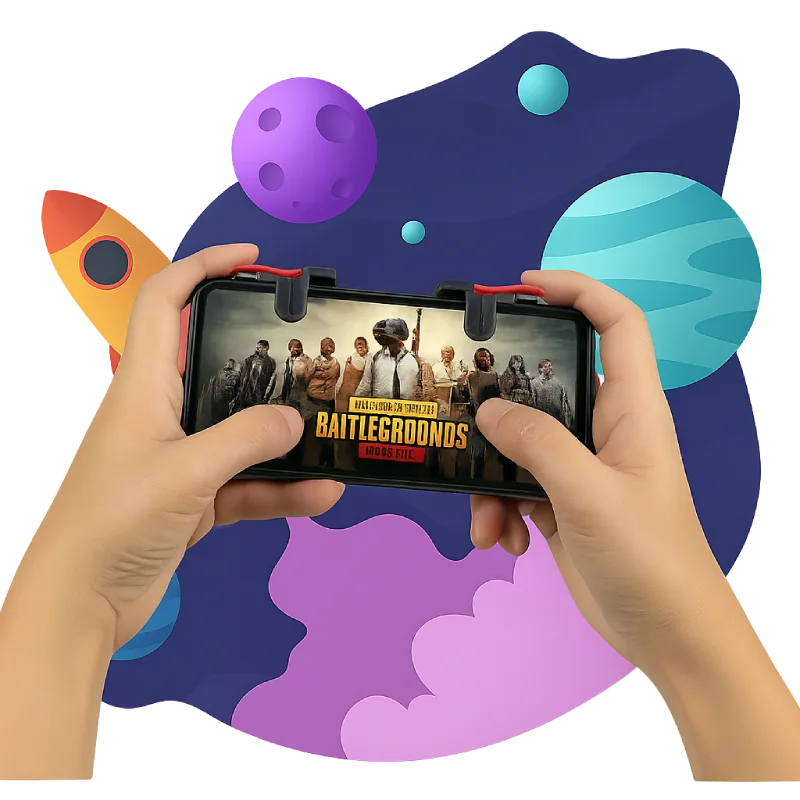HOW TO develop a mobile game
How can a mobile game be made? It begins with a well-defined concept, meticulous preparation, and an awareness of your target audience. Following a structured process from character and gameplay design to game development, testing, and monetization guarantees that your game is profitable, functional, and engaging. This tutorial takes you step-by-step through the entire process of making a popular mobile game.

How to Develop and Monetize a Mobile Game
Plan Your Game Concept
Every successful mobile game starts with a solid plan. During this stage:
-
Define the genre (puzzle, action, strategy, simulation, etc.)
-
Identify your target audience and understand their preferences
-
Outline the core mechanics and gameplay loop
-
Set goals and KPIs for player engagement, retention, and monetization
Proper planning ensures that your game is feasible, enjoyable, and profitable.
Design Art & Assets
The visuals and user experience are crucial for mobile games.
-
Design characters, environments, and UI elements that resonate with your audience
-
Develop animations, effects, and menus optimized for mobile performance
-
Use moodboards and prototypes to test visual style and gameplay feel
-
Ensure assets are lightweight and optimized for smooth performance across devices
High-quality design increases player engagement and retention.
Choose Your Game Engine
Selecting the right game engine impacts development speed, flexibility, and performance. Popular options include:
-
Unity – Great for 2D/3D mobile games, VR, and AR
-
Unreal Engine – Best for high-end 3D graphics and AAA-style games
-
Godot – Lightweight, open-source, suitable for 2D games
Consider your game type, team expertise, and platform compatibility before choosing.
Develop the Game
During development:
-
Code gameplay systems, controls, and mechanics
-
Integrate art assets, sounds, and animations
-
Implement features like levels, scoring, and power-ups
-
Maintain iterative builds to test functionality and gather feedback
Regular testing during development prevents delays and ensures a smoother final product.
Test & Optimize
Quality assurance is critical before launch:
-
Test across multiple devices and screen sizes
-
Identify and fix bugs, crashes, and performance issues
-
Optimize load times, memory usage, and frame rates
-
Gather beta feedback from early users for improvements
A well-tested game improves user experience and boosts positive reviews.
Publish & Market Your Game
After development and testing:
-
Submit your game to Google Play, Apple App Store, or other app stores
-
Promote using social media, influencer campaigns, and paid ads
-
Track analytics to monitor downloads, retention, and engagement
-
Continue iterating updates to keep the game fresh and retain players
A successful launch requires both technical readiness and strong marketing.
Monetization Strategies
Making a game profitable requires smart monetization:
-
Ads – Rewarded videos, interstitials, banners
-
In-App Purchases (IAPs) – Power-ups, skins, unlockables
-
Subscriptions & Season Passes – Recurring revenue through premium content
-
Blockchain/NFT Integration (optional) – For games using digital collectibles
Choose strategies that fit your game type and target audience. Avoid intrusive monetization that reduces player enjoyment.
how to develop a mobile game with NipsApp?
Developing a mobile game is a multi-step process that combines creativity, technical skill, and strategic monetization. Following this roadmap increases your chances of launching a game that is both enjoyable and profitable.
If you want professional assistance, Nipsapp’s mobile gaming development team can help bring your idea to life.
[Learn more about our Mobile Gaming Development services →](https://nipsapp.com/mobile-game-development)




 View on Google Maps
View on Google Maps






